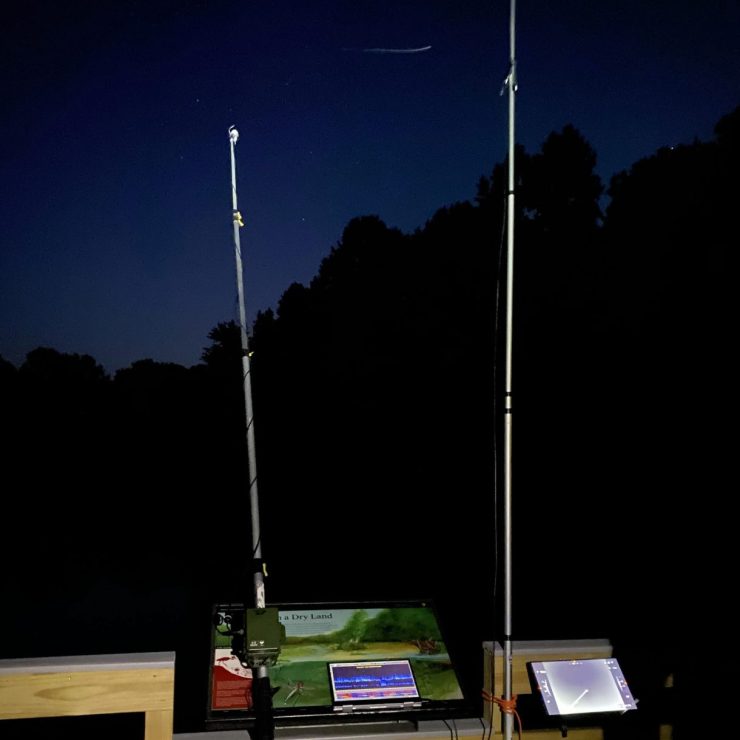By: Hannah McGee
With the recent uplisting of the Northern Long Eared Bat from Threatened to Endangered, there is more need than ever for scientists to survey for bat populations prior to starting construction on projects in sensitive areas. Bats don’t just reside in caves – they can also be found roosting in culverts, under dead tree bark, or among tree leaves. Because of their variety of habitats and nocturnal sleep cycles, scientists have to get creative when surveying an area for bats.
Acoustic monitoring is a commonly used method of survey that allows scientists to detect bats at night, when they’re most active, by recording their calls. This September, two of Straughan’s Environmental Scientists went to an acoustic monitoring workshop to learn how to monitor for bat calls. The workshop was located in and around Mammoth Cave National Park in Cave City, Kentucky, home of the longest cave system in the world (over 400 miles in length!). During the training, Hannah McGee and Isha McKnight learned about the physics of bat calls, the different methods of bat call capture, and the ecology of local bat species, including the newly Endangered Northern Long-Eared Bat.
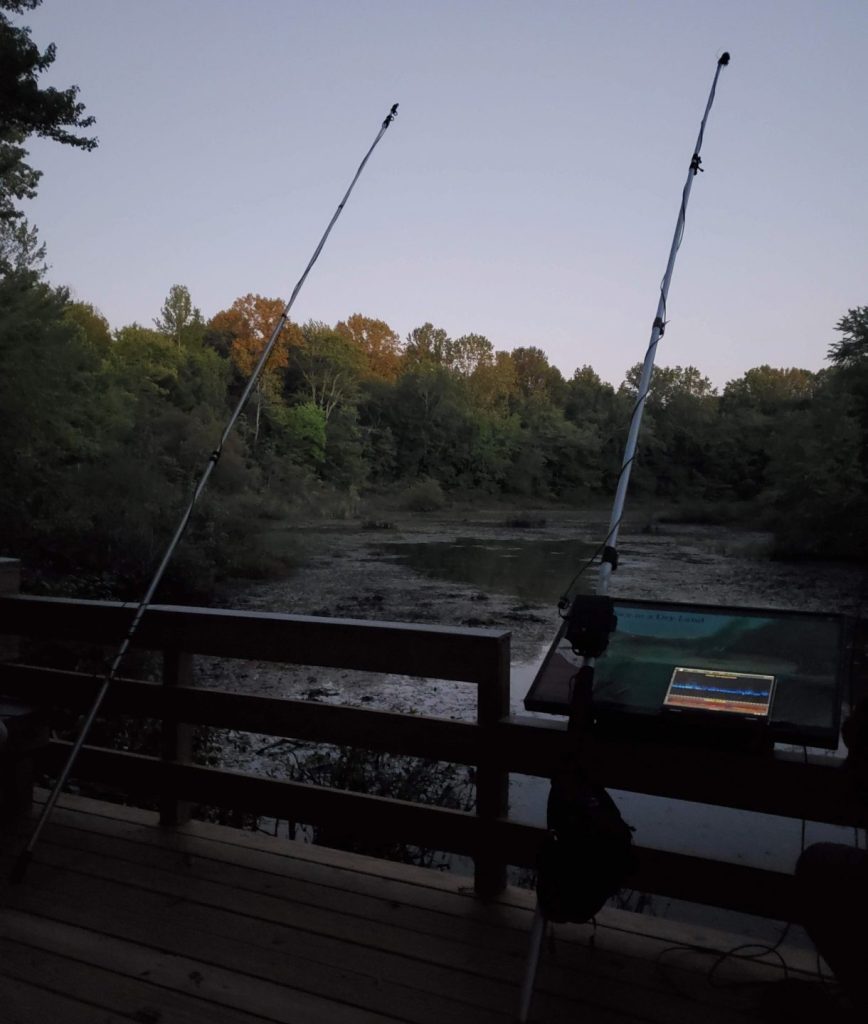
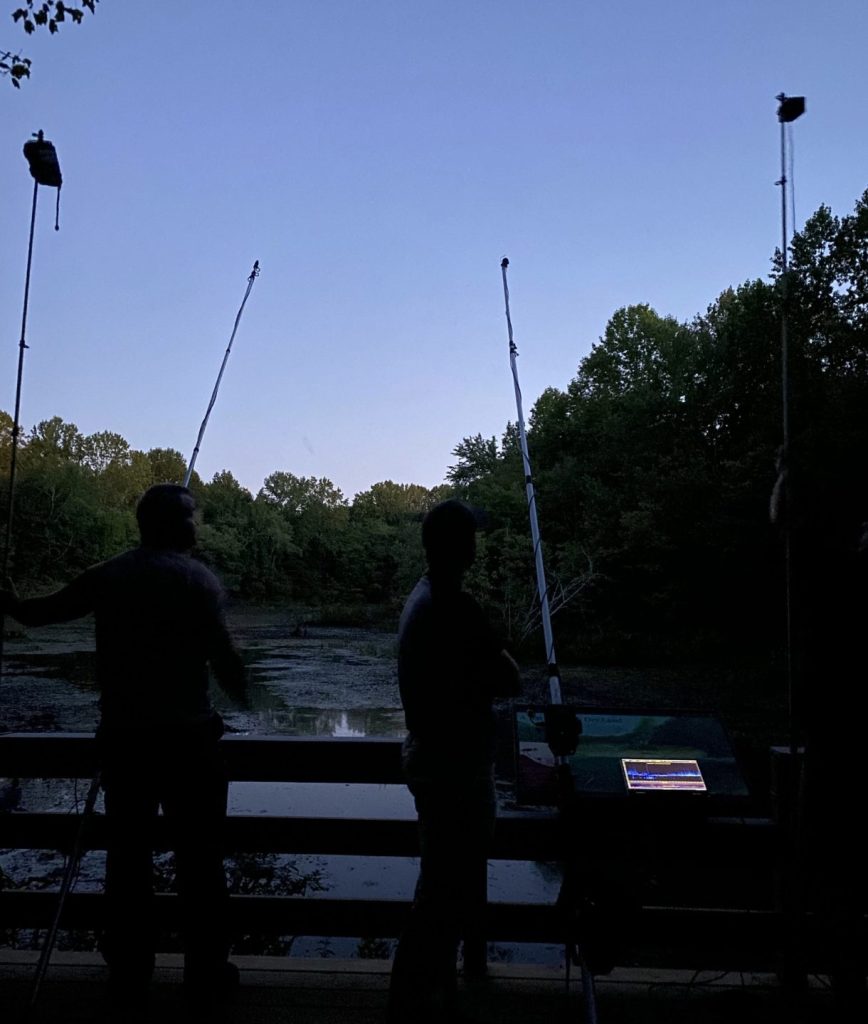
Every evening, acoustic monitoring equipment was set up to record bats at dusk and into the night. Microphones were tied to the ends of 25-foot poles and positioned in the air, away from foliage that could disrupt the delicate call patterns. Over the next few hours, high frequency bat calls inaudible to the human ear were recorded by the microphones and bat monitoring software. Once collection was complete, Isha and Hannah were trained on how to identify bat species using the sonograms of the recorded calls. In one night, the equipment could pick up hundreds of calls, but only a small portion may be high-quality enough for use. Once low-quality calls are sorted from the data, individual calls can be analyzed and identified. Although differentiating calls can be difficult, each species has small signatures in their calls that can be identified by trained professionals. Once all the calls have been analyzed, species can be identified to determine which types of bats are most likely to reside in the surveyed area.
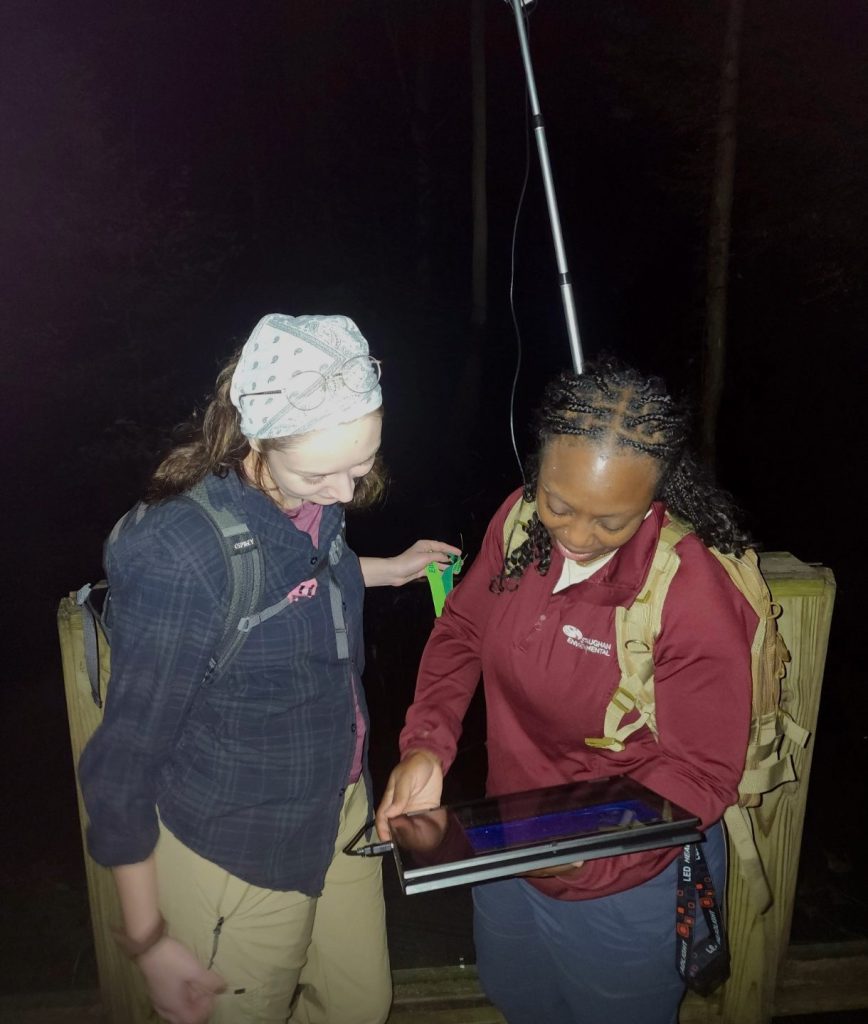
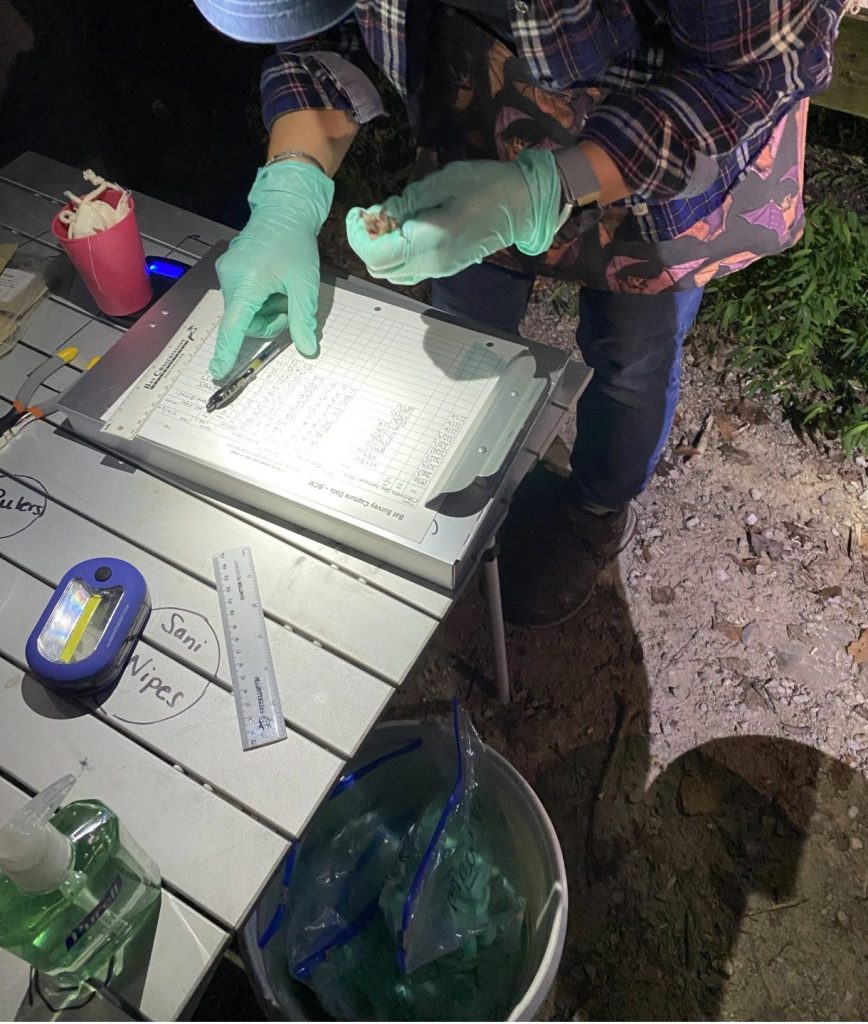
Acoustic monitoring as a survey method is especially important to gather data about threatened species, as it can be employed over a wide area using multiple detectors. As bat populations continue to decline due to white-nose syndrome and habitat loss, survey solutions like acoustic monitoring will continue to become more critical.
